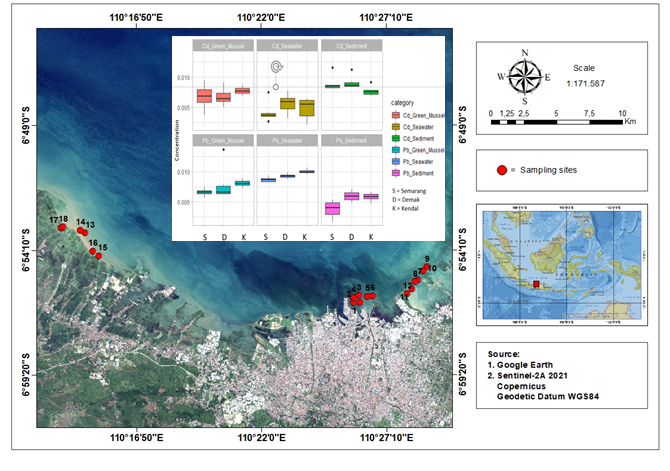Assessment of Heavy Metal Cd and Pb Concentrations and the Ecological Risk from Seawater, Sediments, and Perna viridis in Semarang Bay, Indonesia
Main Article Content
Abstract
Semarang Bay is a multiple water source from some rivers located at the forefront of the most populated city in Central Java. These waters are polluted by wastes from various sources. Previous studies conducted were limited to specific areas and were mainly focused on one or two media only. This research aims to analyse the heavy metal Cd and Pb concentrations in seawater, sediments, and green mussels and the ecological risks. Field data were collected from 18 sites from three locations: Semarang, Demak and Kendal during the dry season of 2020. Environmental variables were measured in situ, and the heavy metals concentrations were analysed using Atomic Absorption Spectrometry. The concentrations of Cd and Pb in the waters of Semarang Bay vary spatially and are above the standard threshold values set by the government. The highest concentration of Cd is found in the sediment and of Pb in the seawater. Despite the exceeding concentrations, the environmental conditions in Semarang Bay are still relatively good based on the low values of contamination indices assessed. This condition, however, can be expected to change when the season changes and needs to be considered by green mussel farmers, coastal managers, and local governments.
Article Details

This work is licensed under a Creative Commons Attribution-NonCommercial 4.0 International License.
Published articles are under the copyright of the Applied Environmental Research effective when the article is accepted for publication thus granting Applied Environmental Research all rights for the work so that both parties may be protected from the consequences of unauthorized use. Partially or totally publication of an article elsewhere is possible only after the consent from the editors.

